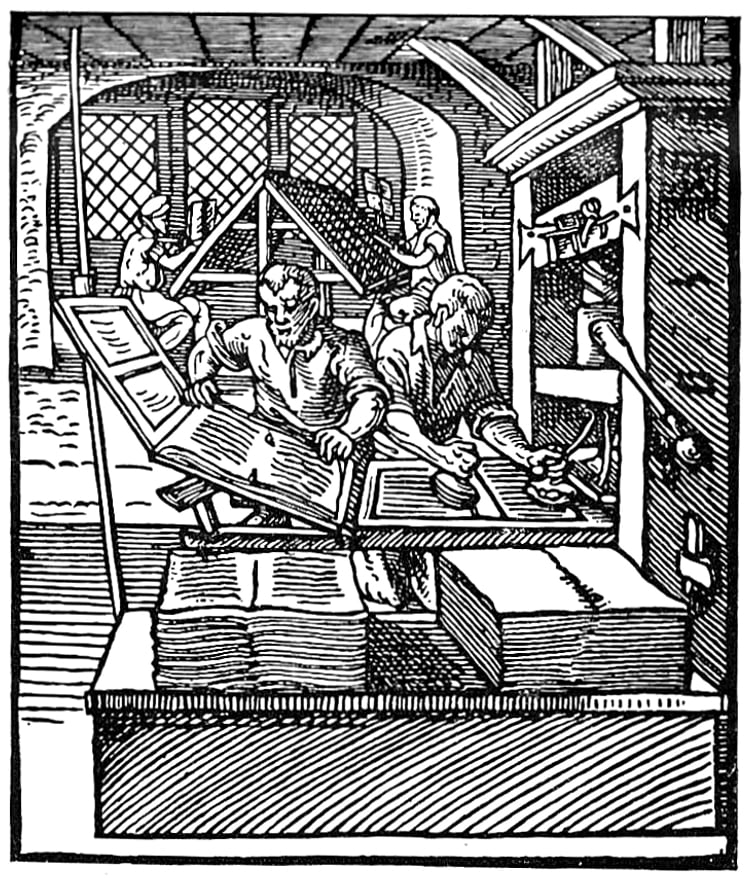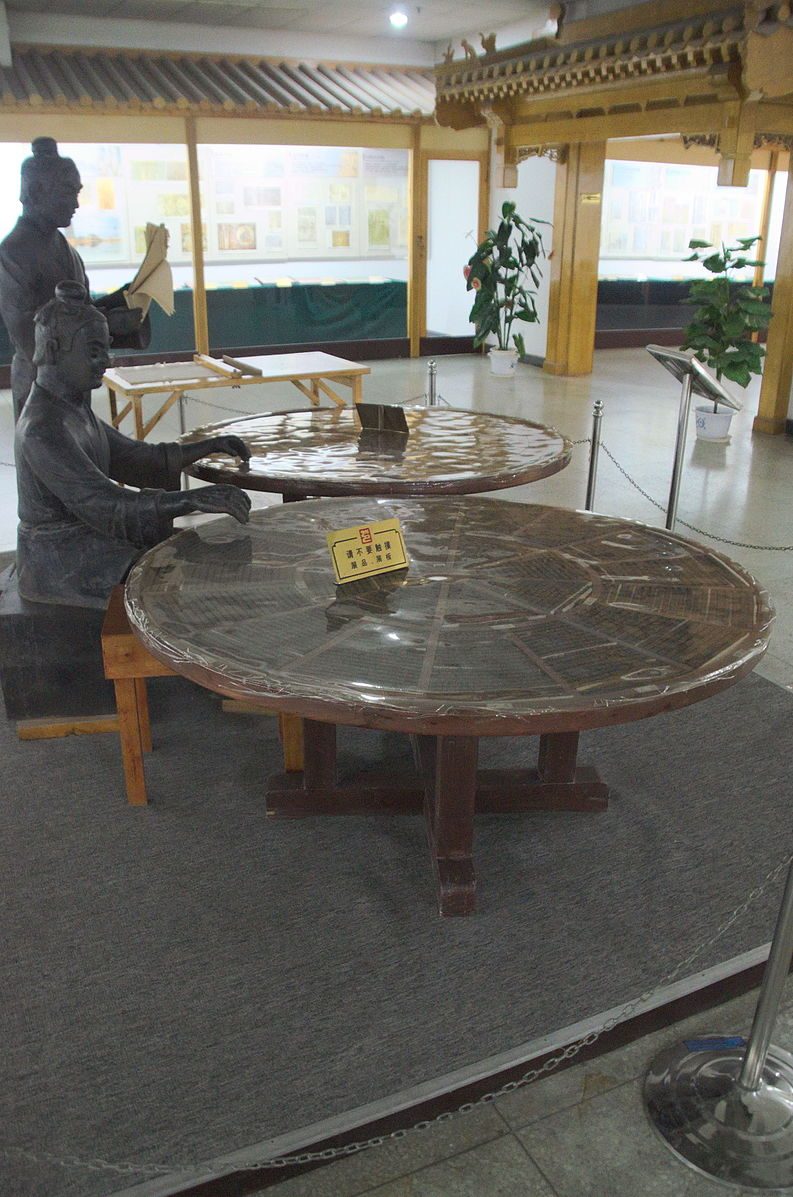
By Sebastien Hayez. Published July 18, 2023
Gutenberg or ...?
Rewriting history is not a new practice, but merely the result of a scientific process that polishes our image of the past with each new discoveries.
Gutenberg is considered the father of typography. However, it's worth always questioning such claims, whose veracity takes no account of contemporary academic research, nor of a context far more subtle than a simple statement.
Gutenberg
Gutenberg (1400-1468) is the first name to appear when the origins of typography are mentioned. However, his considerable contribution is based on a threefold development:
1. the invention of movable type and the balanced alloy for its casting,
2. perfecting a printing press,
3. the composition of printing ink.
Before 1455 and the printing of Gutenberg's 42-line Bible, the text was either copied by hand or engraved in one piece with the images on a linewood matrix.
Gutenberg, aware of the time needed to reproduce text, devised a matrix corresponding to each character. Thus, the juxtaposition of matrices made it possible to recompose each word, each line, each page of text by using identical characters several times, rather than multiplying engravings of the same form.
To perfect this obvious invention, Gutenberg imagined matrices made of metal rather than wood. The metal alloy making up typographic lead is the result of a skilful mixture that produces a metal strong enough to withstand the force of the press, yet soft enough not to cut the paper. The proportions vary from one source to another, but it is generally composed of around 70% lead (Pb), 25% antimony (Sb) and 5% tin (Sn).
As for the press, Gutenberg took his inspiration from the wine press, to ensure even pressure over a large surface. However, he replaced the screw with a metal part for greater strength.
As for printing ink, it's made from a mixture of fats, which help to hold the type and distribute it evenly over the substrate, and pigments similar to those used in the liquid inks used by copyists.

And before Gutenberg?
Korea?
Great inventions are rarely the work of a single person: was Gutenberg really the first to imagine movable type?
Baegun hwasang chorok buljo jikji simche yojeol, or simply called Jikji is a Korean text akin to what would become Japanese Zen. Written by the Buddhist monk Baegun (1297-1374) in 1377, it is distinguished from other texts by the addition on the last page of indications about its production. Indeed, the volumes making up this text are not handwritten, but printed by metal type, of which a few specimens are still known.
78 years ahead of Gutenberg, the Jiki makes Baegun the inventor of movable typography. This fact is not unknown to Western intellectuals, since the volume kept at the Bibliothèque Nationale de France bears the inscription "The oldest known Korean book printed with molded type, with 1377 as date", written by Maurice Courant (1865-1935), academic sinologist and specialist of Korea.
However, it wasn't until the exhibition of the volume preserved in France in 1972 that there was renewed interest in the Korean invention via the work of Dr. Park Byeongseon (1927-2011). As a sign of the text's recognition as the first printed book, the Jikji was officially added to UNESCO's Memory of the World on September 4, 2001.
China?

Does this mean the typography has to be metal? Why not wood or another suitable material? Wooden movable type should be engraved in blocks with vertical rather than horizontal fibers, so that the block can better support the print.
This technical understanding is much more recent than Gutenberg, even though dies for printing fabric ornaments existed in the Middle East and the West several centuries before Gutenberg.
Around 1040, the Chinese attempted to print movable caracters in wood. However, the process, engraved in the direction of the wood grain, proved unsuccessful, as the caracters wore away and the surface was deformed by the use of liquid ink.
Bi Sheng (972-1051), also the inventor of woodcut type, was at the same time introducing molded ceramic type matrices. The process worked very well and lasted until around 1844.
Moulding caracters in ceramic offers the advantage of an accessible and inexpensive raw material, and a known and rapid reproduction technique compared to metal caracters. However, the Chinese were unable to perfect the ink, which adhered poorly to the surface of the caracters. What's more, caracter deformations were observed during the firing process, making small type far less legible.
So it's no mistake to claim that the Chinese invented movable type. However, the impact of this invention in Asia did not radically shake up the continent's social and cultural practices, unlike Gutenberg's print revolution in the West.
The reasons for this abortion could lie in the socially elitist aspect of printing in Asia. However, this overlooks the fact that in the West, for several centuries, printers received royal privileges to print religious books, ancient classics or works in honor of royalty.
The goldsmith work carried out by Gutenberg's associates was limited to the engraving of around a hundred punches (capitals, lower-cases, punctuation, numerals, a few ligatures and diacritics), whereas the Chinese and Koreans (sharing the same ideograms) had to engrave between 30,000 and 60,000 punches. Gutenberg introduces the printing press, while the Asians still print by hand with a mobang (or baren in Japanese).
In a nutshell: Gutenberg saw printing and typography as a commercial industry, and his choice of the Bible as his most popular text (the Vulgate) was proof that he was looking to quickly sell out the 180 copies.
To bring about a revolution, invention alone is not enough: technical innovation must be combined with the need for social and commercial evolution. From this point of view, Asia was no more than a spark, Gutenberg a richly nourished hearth.